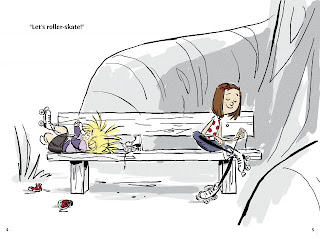
Don Freeman is a successful author and illustrator of many children's books. Don continued as a writer, illustrator, cartoonist and print maker until his death in 1978. Some of his works include Inspector Peckit, Mop Top, Rainbow of My Own, Earl the Squirrel and Chuggy the Blue Caboose. Although, his most famous book is of a little bear named Corduroy, which not only turned into a series of stories but a television show as well. Corduroy has captured the hearts of millions of children and families since it was published in 1968 by Puffin publishing company.
Corduroy is a book about a small stuffed animal bear. When nobody buys him, he starts to wonder if its because he is missing a button on his overalls. One night in the big department store he goes looking for his missing button. When he sees what looks like a button on a big bed, he tries to pull it off and makes so much noise that a security guard comes up and finds him in the biggest bed in the store. The next day, when he woke up, he saw the girl who had come in the day before looking at him, telling him that she wanted to take him home. When he got to her house, he saw his own bed next to hers. She sewed on a new button for him and he thanked her by telling her he has always wanted a friend, which she replies “so have I”.
One of the main themes that is portrayed in this book is the idea that even though the bear is not perfect, and might have flaws, it is still worthy of love. Even though the bear is missing a button, it doesn't mean that it cannot be loved. Another aspect that comes out of this is that you cannot judge something by its first impression (which is something the mom did when she told the girl she could not buy the bear with the missing button).
Lastly, it lives out the fantasy that everyone dreams about...spending the night in a department store. Now who doesn't want to try that for a night. Its something that every kid dreams about, and can live that through this story. The book is well written and easy to understand by its target audience of preschoolers. The idea of being able to play with your stuffed animals is something that every child lives through when they are young, so this book about a little bear looking for a friend is easy for a young child to relate to.
Don Freeman's illustrations seem to come to life on the page and truly show the emotions of the characters. The colors are appealing to children and engaging as well. The pictures mostly show shelves of stuffed animals, beds and bedrooms, which are easy for kids to comprehend.
This adorable story about kindness and love is one that I have never forgotten since my mom read it to me as a child!
Enjoy,
Haley












